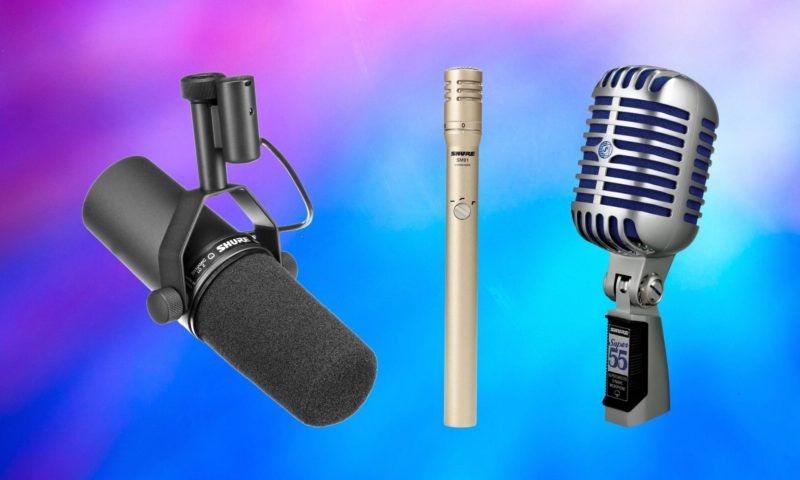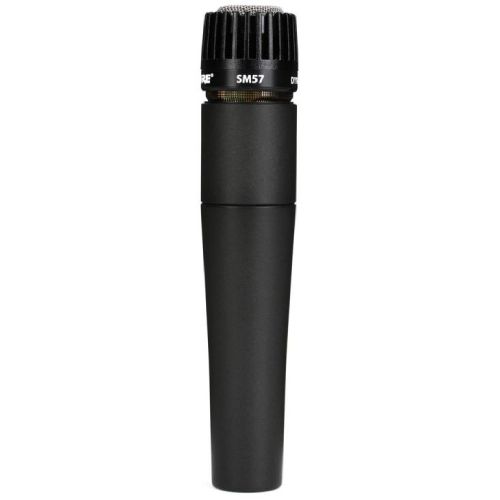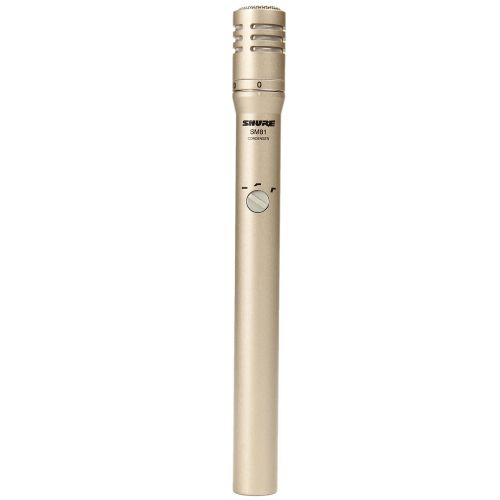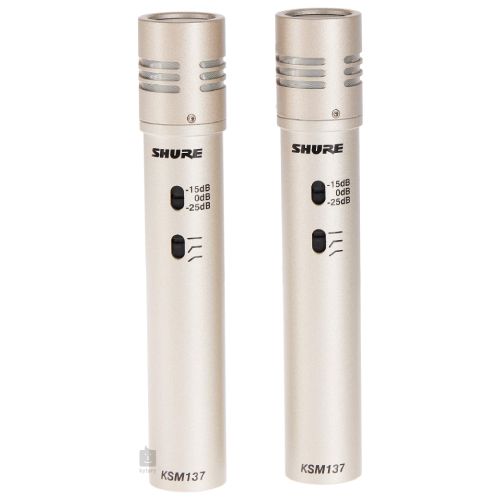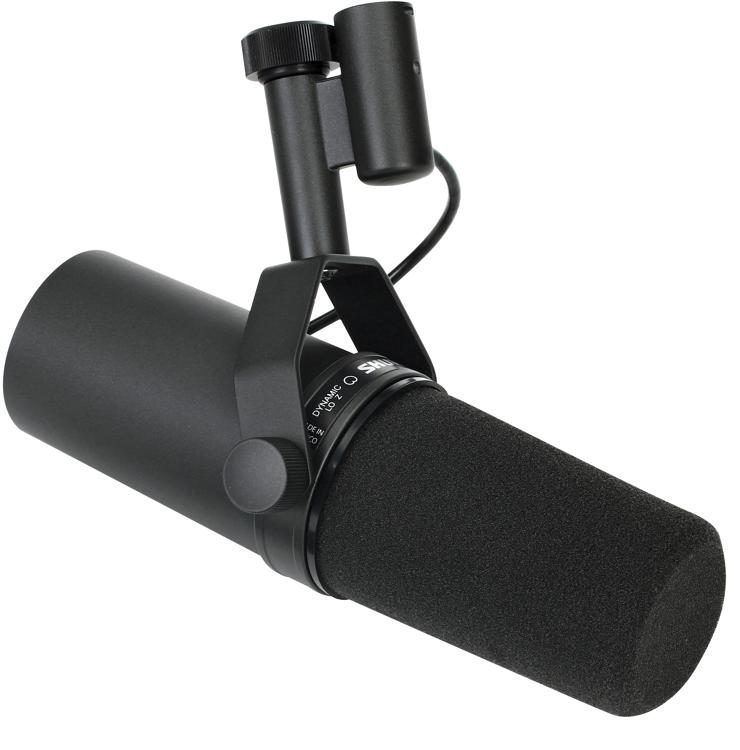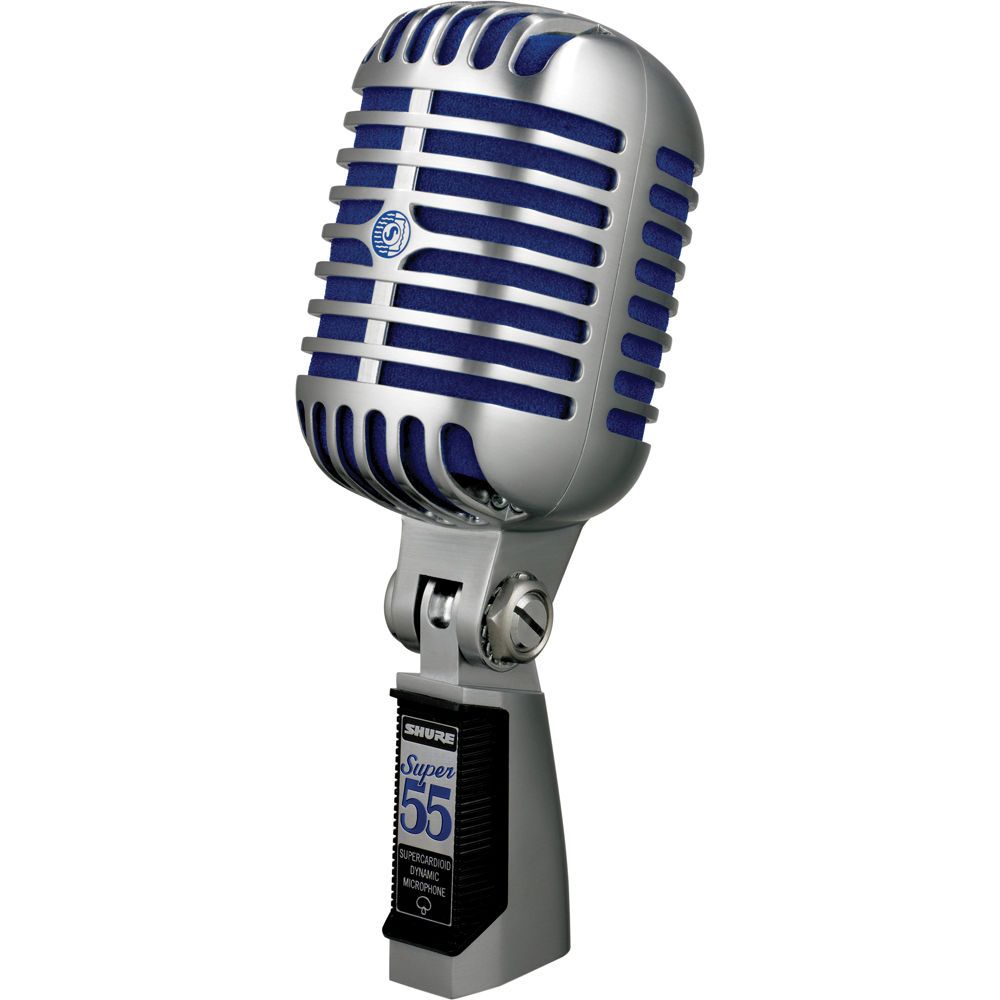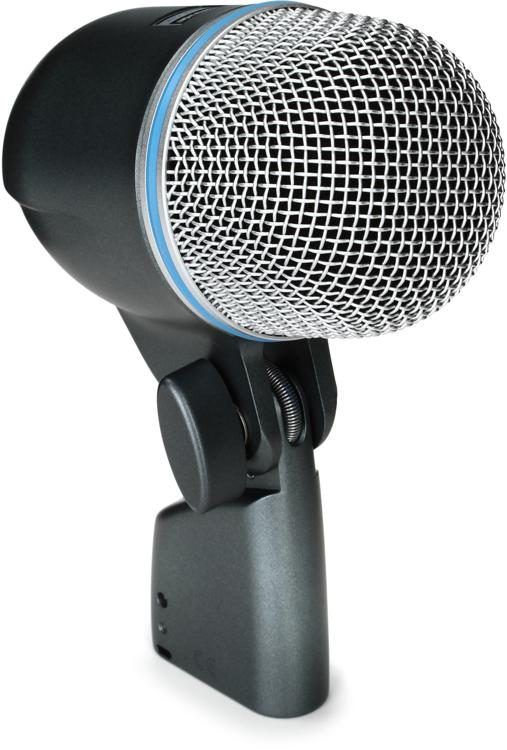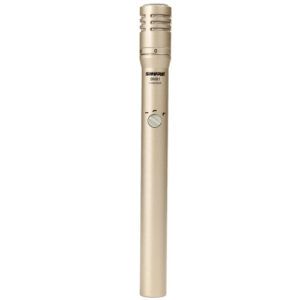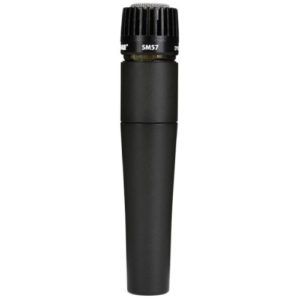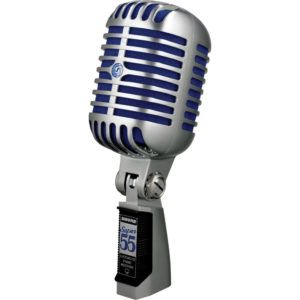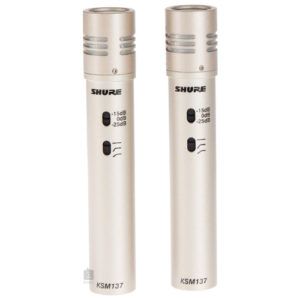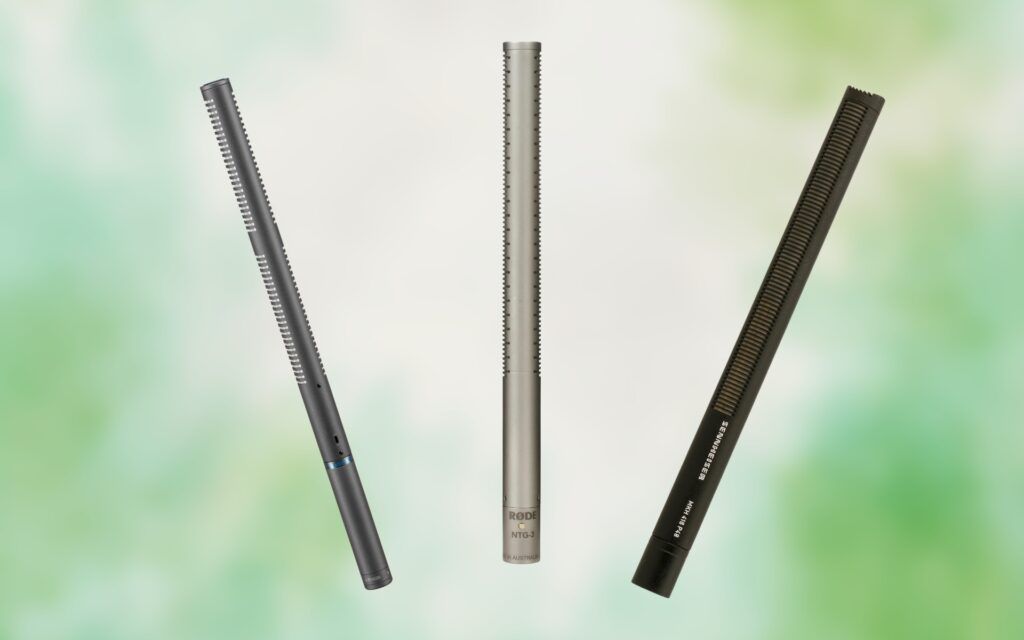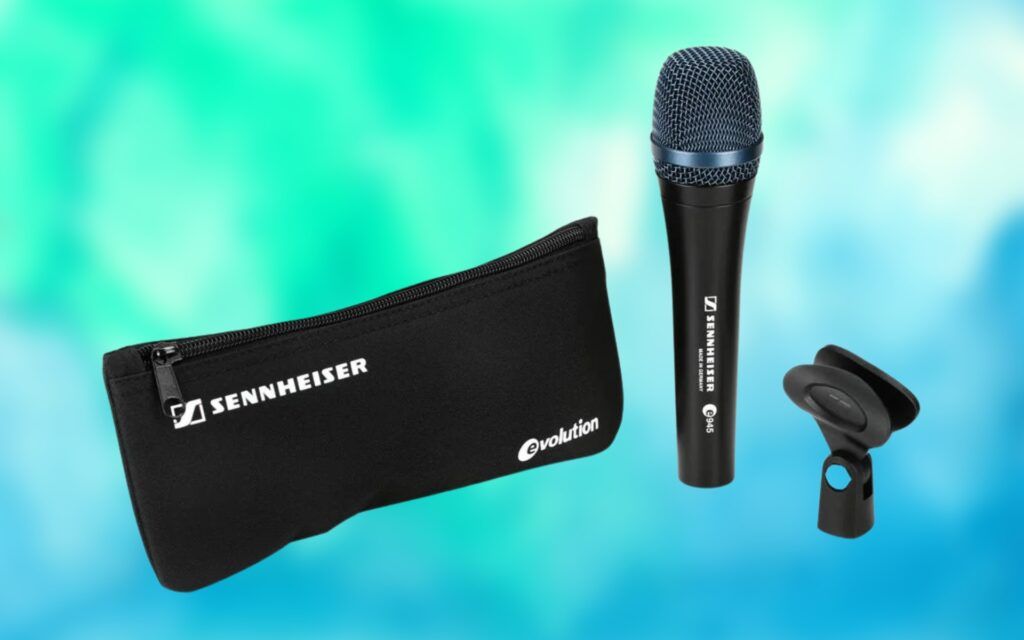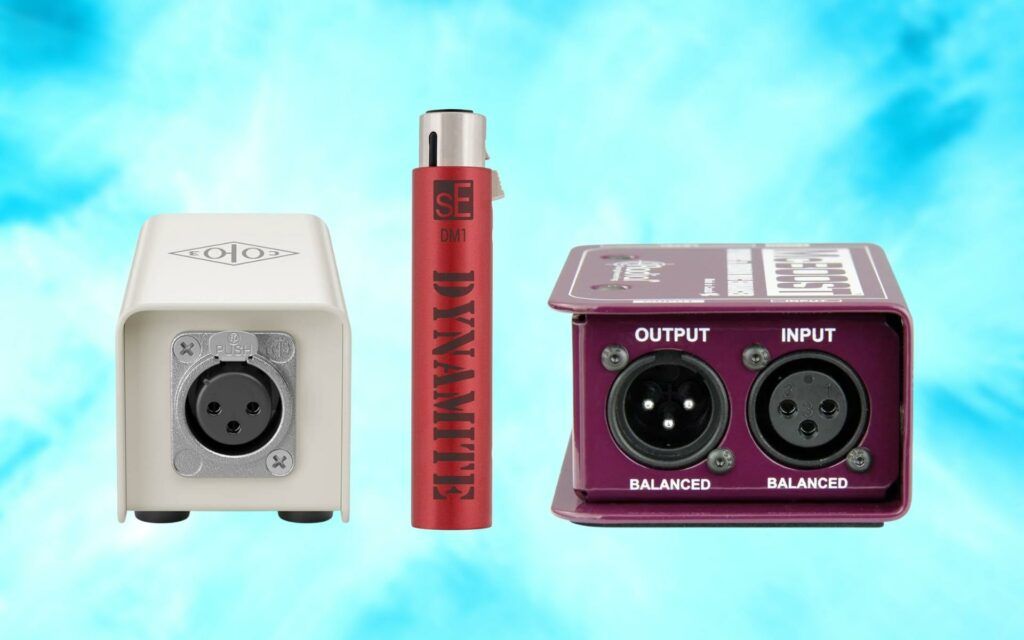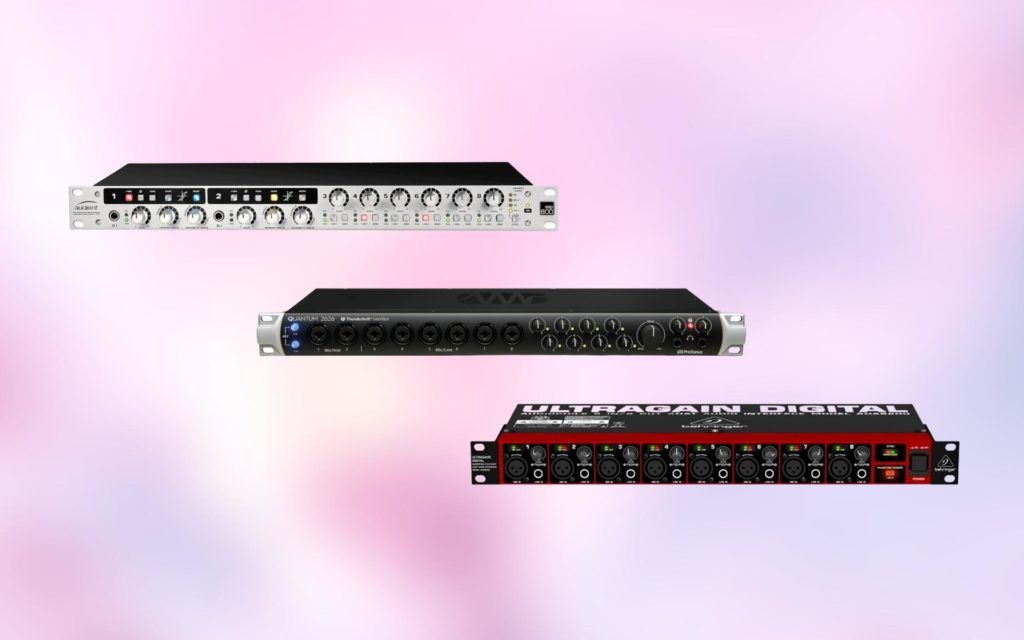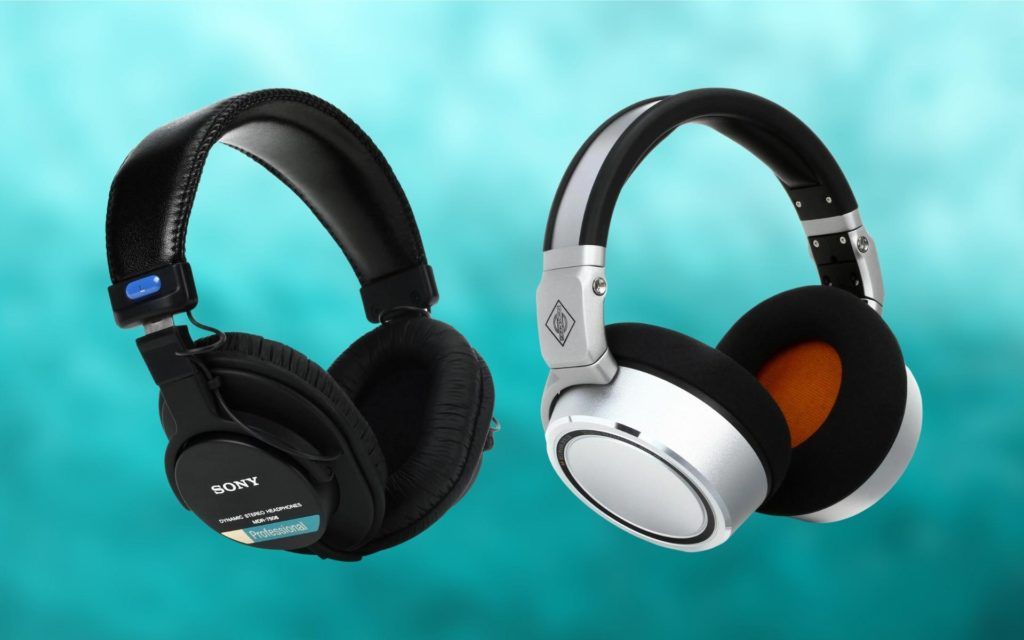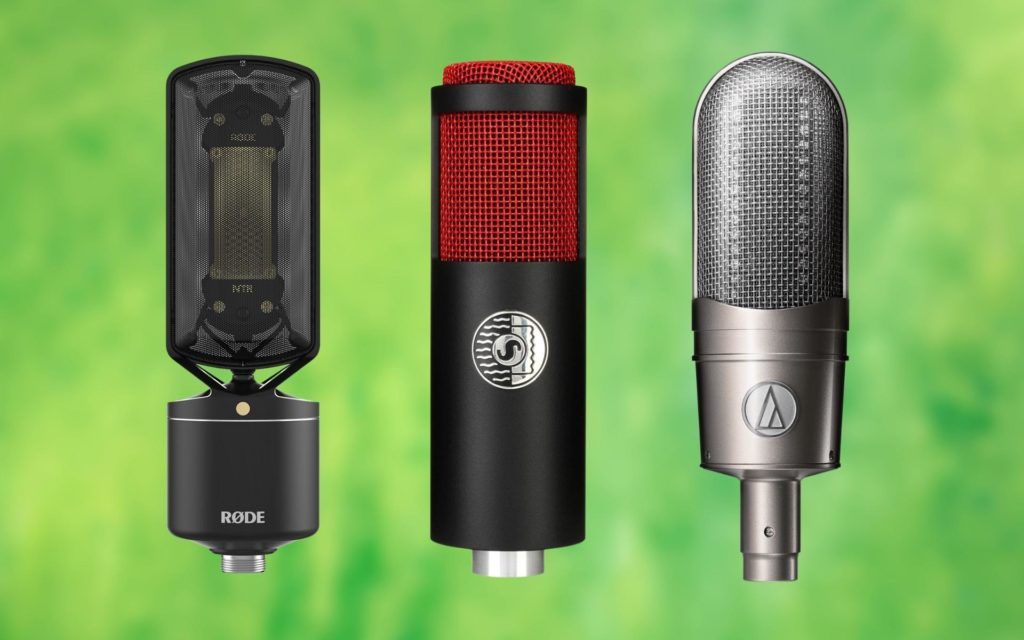We review products independently and our recommendations are genuine. If you purchase through links on our site, we may earn an affiliate commission. Learn More
Shure’s microphones are renowned for their legendary sound and build quality. They remain some of the most reliable and high-performing mics in the world.
Founded back in the 1920s, Shure is one of the world’s best-known and longest-standing microphone manufacturers. The brand has consistently produced innovative and high-end mics throughout its decorated history.
Many Shure microphones are designed specifically for live audio, some are hybrid options that can be used for various purposes, and others are purpose-built for use in a recording studio.
With such an abundance of top-tier mics in their catalog, it can be tricky to know which Shure microphones you should invest in. This guide will provide a wide selection that will enhance your recording setup significantly.
In a Rush Roundup
How We Tested
Our process of testing these Shure microphones began by assessing their ability to record various amplified and acoustic instruments. We then tested their vocal-capturing capabilities.
Next, we monitored the amount of noise the microphones produced when a significant amount of gain was added to the signal. We then checked the durability of the Shure microphones to predict their longevity. You can find the results of our tests in the review section below.
Shure Studio Mics Reviews
Shure SM7B Cardioid Dynamic Vocal Microphone
Shure SM7B Cardioid Dynamic Vocal Microphone Review
You’ve probably seen the Shure SM7B used by your favorite podcasters and content creators or in a recording studio by a musician. This microphone can be used for many different purposes.
Versatile is a term that gets used a lot to describe microphones, but the SM7B is one of the few that truly deserve this description. This is partially due to the inclusion of two-tone control on the mic.
These controls allow you to adjust the prominent frequencies captured by the SM7B, similar to having a built-in 2-band EQ on the mic. This feature is typical of Shure, which is renowned for its innovation.
Another reason that the SM7B is one of Shure’s best studio microphones is that it can handle the loudest of sounds with no problem. With a maximum SPL handling of up to 180dB, this mic can be used for everything from snare drums to guitar amps.
The SM7B has been around for a long time, but it continues to rank among the most popular mics of its kind, which is a testament to the quality of Shure’s design.
If you’re looking for a microphone that will deliver on all fronts in your recording studio, the SM7B is an excellent choice. It even includes an onboard pop filter to improve vocal recordings.
Features:
- 50Hz-20kHz frequency response
- Cardioid polar pattern
- Bass roll-of and midrange boost controls
Pros
- Great for recording vocals
- Minimizes plosives and wind noise
- Shielded against hum and interference
Cons
- Works best when paired with a preamp
Shure SM81 Small-diaphragm Condenser Microphone
Shure SM81 Small-diaphragm Condenser Microphone Review
Most Shure microphones are great rounders that can perform various roles within a recording environment. The SM81 is a little more specialist than many other Shure mics, but it’s still pretty versatile.
Thanks to its small-diaphragm design, this microphone can hone in on the sound of an acoustic instrument and capture all of its intricacies. It’s competent at recording the sound of an acoustic or classical guitar and other acoustic stringed instruments.
Additionally, the Shure SM81 is an excellent microphone for recording a piano. Its extensive frequency response covers the entire spectrum of this instrument, making it a good option for pianists.
Shure has installed a 3-way highpass filter switch on this condenser microphone and a -10dB pad. These features are handy if you want to tailor the sound of your recordings without needing to do all of the work during the mixing process.
The legendary Shure durability is also evident as soon as you get your hands on the SM81. It’s made from vinyl-coated steel and can handle the inevitable bumps and scrapes when using a mic for studio recordings.
Also included with this microphone are all the necessary accessories you need to use it effectively. You get a carry case for easy transportation, a foam windshield for preserving clarity, and a swivel mount adapter for added convenience.
Features
- 20Hz-20kHz frequency response
- 136dB max SPL
- Cardioid polar pattern
Pros
- Focused recordings
- Can be used to capture drums, guitars, or other instruments
- Rugged design
Cons
- May work best as a stereo pair
Shure SM57 Cardioid Dynamic Instrument Microphone
Shure SM57 Cardioid Dynamic Instrument Microphone Review
Few microphones have had the level of impact that the Shure SM57 has in the past half-century. This workhorse dynamic microphone can be used for basically any purpose in a recording studio or live sound.
The first thing that springs to mind when an SM57 is mentioned is its unparalleled durability. This microphone is built like a tank, and its design has won many accolades and awards.
For recording music, the SM57 works best with instruments that don’t produce frequencies over 15kHz. It can be used for acoustic drum kits, amplified guitars, acoustic instruments, and vocals.
The SM57 is so robust that it’s difficult to break! It can withstand a heavy workload in the studio, so if you plan on using your microphone often, investing in this Shure dynamic mic is a wise move.
The cardioid polar pattern allows you to crank up the gain without risking feedback, and you can place the SM57 in front of your guitar amp’s speaker without worrying about noise problems.
There isn’t an instrument or vocal style that the SM57 hasn’t been used to record over the years – it’s genuinely an incredible all-rounder.
Features:
- 40Hz-15kHz frequency response
- 190dB max SPL handling
- Tight cardioid polar pattern
Pros
- Legendary dynamic mic
- Can be used for vocals or any instrument
- Built to last for many decades
Cons
- Some may find the sound a little dark for vocal recordings
Shure Super 55 Deluxe Supercardioid Dynamic Vocal Microphone
Shure Super 55 Deluxe Supercardioid Dynamic Vocal Microphone Review
The Super 55 Deluxe is based on the dynamic vocal microphones used in the mid-1950s by early rock n’ roll vocalists. It features a striking visual design, which makes it stand out amongst Shure’s other studio mics.
Despite its distinctively vintage design, this microphone utilizes modern technology to capture audio with pristine clarity and pinpoint accuracy. The super-cardioid capsule provides maximum focus, making it ideal for one-person vocal recordings.
This Super 55 Deluxe microphone may be specifically designed for vocal recordings, but due to its dynamic makeup, it can also handle impressive SPLs. Therefore, you can also use it to record an amplified guitar or as a drum overhead mic.
The physical design of this dynamic microphone makes it easy to use, thanks to the swivel stand mount. You can easily maneuver the mic into the ideal position for a vocal recording by tilting the angle.
Shure has added a shock-mounted cartridge to the inside of the microphone, which helps to keep handling noise to a minimum and ensure that your recordings sound as clear as possible.
Features:
- Supercardioid polar pattern
- 60Hz-17kHz frequency response
- Shock-mounted cartridge
Pros
- Great for recording drums or guitar amps
- Keeps operation noise to a minimum
- Rejects off-axis sound brilliantly
Cons
- Not suitable for being used as a room mic
Shure Beta 52A Supercardioid Dynamic Kick Drum Microphone
Shure Beta 52A Supercardioid Dynamic Kick Drum Microphone Review
Recording instruments that produce the bulk of their frequencies in the lower registers is complex, as most microphones aren’t designed for this purpose. The Beta 52A is one of the best options available for this type of recording.
You can tell from its bulky construction that this microphone can handle the beefy low-end frequencies of a kick drum or bass guitar with no problem. It prevents muddy recordings by highlighting the desired frequencies of these instruments.
The frequency response of the Shure Beta 52A spans from 20Hz to 10kHz, so minimal frequencies in the upper ids and treble bands are recorded. This means you don’t need to spend hours EQing your kick drum or bass guitar recordings, as the mic does the work for you.
Kick drum mics often take a beating in the studio, so Shure has ensured that the Beta 52A won’t buckle under the pressure. It’s built like a tank and will handle as much work as you require from it.
The super-cardioid polar pattern combined with a maximum SPL handling of 174dB makes this microphone the perfect choice for all of your low-end recordings.
Features:
- 174dB max SPL handling
- 20Hz-10kHz frequency response
- Supercardioid polar pattern
Pros
- Excellent for capturing low-end instruments like kick drums
- Records bass guitar amps cleanly
- Easy to position
Cons
- Not suitable for treble-heavy recordings
Shure KSM137 Small-diaphragm Condenser Microphone - Stereo Pair
Shure KSM137 Small-diaphragm Condenser Microphone - Stereo Pair Review
Shure’s KSM137 is a small-diaphragm condenser microphone that benefits from having a Mylar diaphragm installed within it. The diaphragm is low in mass and has a gold layer, which combines to improve its transient handling capabilities.
Additionally, this microphone’s steady cardioid polar pattern keeps recordings focused but doesn’t eliminate ambient room noise so that you can achieve a natural sound.
Using the KSM137 as a stereo pair opens up a new realm of possibilities in your recording studio. You can capture any instrument in stereo so that your mixes can be made more open so that you can maximize the stereo field.
Furthermore, the Shure KSM137 has both a highpass filter and a pad, each of which has three selectable positions.
Harmonic distortion can be an issue with small diaphragm condenser mics, but Shure has combatted this by installing a Class A preamp with no transformer.
Features:
- Gold-layered Mylar diaphragm
- 20Hz-20kHz frequency response
- 134dB max SPL handling
Pros
- Records vocals with clarity and focus
- Has a warm, vintage sound
- Combats humming and buzzing noises
Cons
- Can’t handle very loud sounds
Shure Mics for Studio Recordings Buyer's Guide
In the microphone industry, it’s common to see brands rise to popularity and then fade out when they can’t follow up on their initial success. Shure is one of the manufacturers maintaining its position at the forefront of the microphone-making world for decades.
Many Shure mics in production today have been around since the ‘60s, ‘70s, or ‘80s. Still, they remain the most reliable and high-performing mics in the world despite all of the advancements we’ve seen in audio technology.
Shure isn’t one to rest on its laurels, though. The manufacturer continues to create new innovative microphones that use the wealth of knowledge combined with modern innovation to keep the brand as relevant as ever.
One of the challenges we face as musicians and audio engineers is that there are so many incredible Shure mics to choose from that identifying just a few can be incredibly difficult.
In the buyer’s guide below, we’ll show you what you need to look out for to make the best decision.
Things to Consider When Buying Shure Mics
Mic type
Shure manufactures a range of mics in different categories. You need to figure out whether you would benefit from a dynamic condenser or ribbon mic the most before you decide on the individual model.
Polar patterns
Cardioid polar patterns are the most frequently used by Shure, but some of their mics also offer omnidirectional and figure-8 pickup patterns.
Physical design
The way that a Shure microphone looks may not be too important, but its physical attributes, such as size, construction, and the material that compose it, are definitely worth considering.
Diaphragm
Diaphragms are one of the most important components in any microphone, and Shure uses many different types depending on their specific goals when designing their mics.
What Should You Look For in a Shure Microphone?
Shure’s consistency makes choosing between the many microphones they produce pretty tricky. Several mics, like the SM7B and SM57, have a massive reputation, but you should put your perceptions aside for now.
Rather than looking for the Shure microphone that is the most popular, it’s important to consider its compatibility with your specific recording needs.
Ask yourself what you intend to use a Shure microphone for. Are you going to be recording mainly vocals? If this is the case, a large-diaphragm condenser is your best bet.
Or, do you need a microphone that can handle the high volumes of a snare drum or a guitar amplifier? If the answer to this question is yes, then one of Shure’s robust dynamic microphones will do the job.
There’s really no such thing as a “better” Shure microphone – they’re simply all good at different things.
Try to keep this in mind when comparing them. Keep thinking about whether the microphone is suitable for the context in which you plan to use them when recording, rather than focusing on its reputation or popularity.
Polar Patterns
One of the most important things you’ll need to look out for when choosing which Shure microphone best suits your requirements is the polar patterns.
Most condenser mics made by Shure have a cardioid polar pattern, which is most sensitive at the front of the capsule and rejects sound from the rear and both sides.
Cardioid is a good choice for recording vocals, acoustic instruments, and any other sound sources where the majority of the sound is directed to the front of the microphone capsule.
In addition to cardioid, Shure may also include a more focused polar pattern like super cardioid, which is great for honing in on a particular instrument, such as a drum overhead or snare.
Switchable polar patterns allow you to quickly adjust the directionality of a Shure microphone so that it can be used to capture audio from different angles to the default setting.
Having multiple polar patterns to choose from is great if you intend to record a wide range of sounds and instruments with your Shure mic, but it may be unnecessary if you would rather keep things simple.
Recording Requirements
Shure’s microphones can be used in mono or as a stereo pair. If you acquire two identical Shure mics, you’ll be able to use them for stereo recordings, which can expand the width of your mixes.
This also facilities XY recordings techniques, where the two microphones are placed in line with one another at the same angle. This method can create immersive recordings, particularly of acoustic instruments.
Additionally, when choosing a Shure microphone, you should consider its size and how it will fit into your current recording setup.
Small diaphragm condenser mics are easy to slot into position for recording, but bulkier large diaphragm models may not be as practical.
Shure Studio Mics FAQs
Is The Shure SM58 a Good Studio Mic?
The Shure Sm58 is one of the most popular dynamic microphones around, and although it can be used for recordings, it’s most commonly used for live vocals.
The SM58 can handle high SPLs, and for a dynamic mic, it has a pretty extensive frequency response. Therefore, you can use it either in a live situation or for recordings in the studio to capture vocals, guitar amps, or drums.
Why is a Shure SM7B so Quiet?
The Shure SM7B is a naturally quiet microphone because it has a low output. This isn’t a bad thing – it simply means that you either have to get close to the microphone, or you will need to use a signal boosting preamp to add gain to the signal.
The SM7B requires around +60dB of gain to get to the adequate level for recordings. There are many specific preamps designed to provide this amount of gain boost to low output dynamic mics like the Shure SM7B.
Who is Shure Owned By?
Shure is still owned by the family that shares the name with the company. The brand was started in the United States and has continued to be run by the descendants of the original founders who started the company back in the 1920s.

